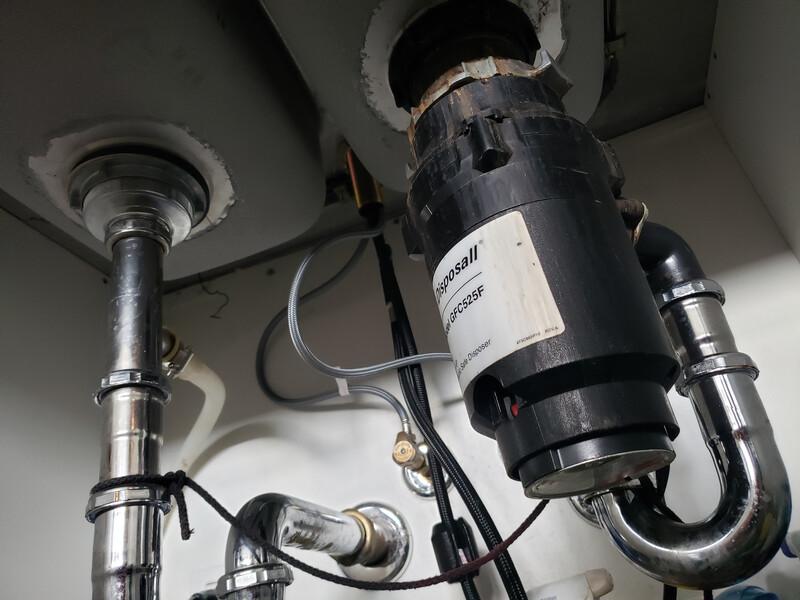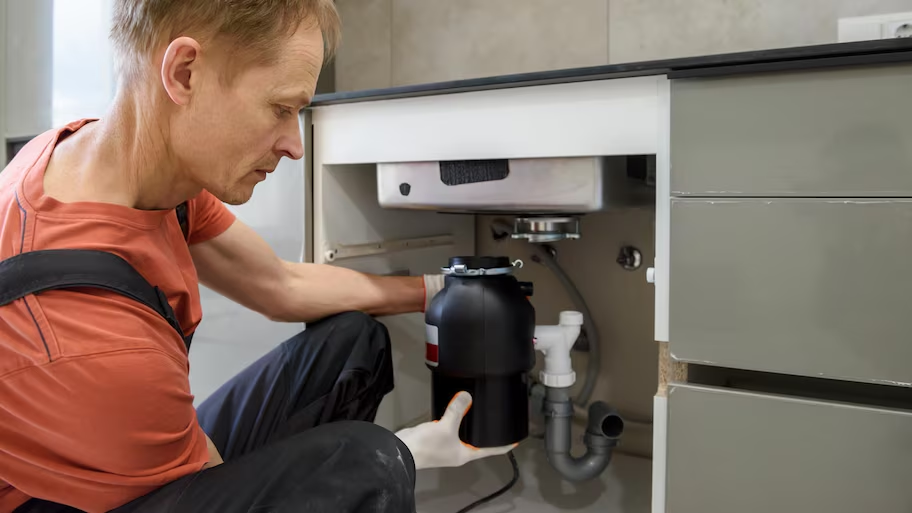What are your opinions regarding How to fix a pretty consistent leak from my garbage disposal?

Waste disposal unit are important kitchen area appliances that assist in getting rid of food waste efficiently. Nevertheless, a dripping garbage disposal can be an irritating and messy trouble to handle. Thankfully, lots of leaks can be repaired easily with a few easy steps. In this article, we will talk about just how to fix a dripping waste disposal unit properly.
Introduction
Waste disposal unit are mounted under cooking area sinks and are developed to shred food waste right into smaller sized pieces, permitting it to travel through the plumbing system quickly. While these devices are normally reliable, leakages can take place over time due to wear and tear, loosened links, or damages to the system.
Step-by-Step Overview to Taking Care Of a Leaking Garbage Disposal
Switch off the Power
Before attempting any kind of repair work, make certain that the power to the garbage disposal system is switched off to stop the danger of electrical shock.
Find the Leak
Determine the precise location of the leak and figure out the cause
Tighten Connections
Utilize a wrench to tighten any kind of loose links in between the disposal device and the plumbing system.
Replace Seals or Gaskets
If the leakage is due to used seals or gaskets, remove the old components and replace them with brand-new ones.
Patching Fractures or Openings
For cracks or holes in the disposal system, usage epoxy or an appropriate patching material to seal the broken area.
Identifying the Resource of the Leakage
Before attempting to fix a dripping garbage disposal, it is important to recognize the resource of the leak. This can usually be done via visual examination or by performing easy tests.
Visual Evaluation
Check the waste disposal unit unit carefully for any indicators of water leakage. Pay very close attention to locations around seals, gaskets, and connection points.
Evaluating for Leaks
One method to test for leaks is by running water through the disposal system and checking for any visible indicators of leak.
Usual Causes of Leakages in Garbage Disposals
Worn Seals and Gaskets
Seals and gaskets play a critical role in stopping water from dripping out of the garbage disposal. Over time, these parts can weaken, resulting in leakages around the disposal system.
Loose Connections
The connections between the garbage disposal and the plumbing system can come to be loosened over time, triggering water to leak out during operation.
Fractures or Openings in the Disposal Unit
Physical damage to the garbage disposal, such as cracks or holes in the real estate, can additionally lead to leaks.
Devices and Materials Needed for Dealing With a Leaking Waste Disposal Unit
Prior to beginning the fixing procedure, collect the needed tools and materials, including a screwdriver, adjustable wrench, plumber's putty, replacement seals or gaskets, and epoxy or patching product for fixing splits or holes.
Examining the Waste Disposal Unit After Repair Work
Once the repair is full, check the garbage disposal by running water with it to make sure that the leak has actually been fixed.
Preventive Maintenance Tips to Stay Clear Of Future Leakages
To avoid future leakages, it is essential to do routine upkeep on your waste disposal unit. This consists of keeping it clean, avoiding placing non-food items or difficult things down the disposal, and regularly looking for leakages or other issues.
Final thought
Finally, repairing a dripping waste disposal unit is a reasonably straightforward process that can be completed with basic tools and materials. By complying with the steps detailed in this write-up and practicing preventive maintenance, you can keep your garbage disposal in good working problem and prevent pricey repair services in the future.
What to Do About a Leaking Garbage Disposal
A leaking garbage disposal often goes unnoticed until you confront a sopping cabinet, a foul-smelling puddle, or an audible drip-drip-drip from the unit. The fix can be frustrating, too, because the leak can stem from a number of components in the system. Fortunately, with a little sleuthing, you can zero in on the leak and—depending on the exact location—stop the icky oozing and repair the component that caused it. Worst case scenario, if it turns out that the garbage disposal must be replaced, installing a new one is a reasonable do-it-yourself task for those with basic plumbing skills. Read on to keep the cash you’d otherwise hand over to a pro.
Prepare to find the leak
Prior to testing the garbage disposal for leaks, unplug it at the wall outlet and turn off the power from the breaker box to prevent electrical shock. Then insert a watertight sink stopper into your sink drain and wipe the unit dry with a clean cloth. In any handy container, mix a few drops of food coloring into a few cups of water, and pour the dyed water onto the sink stopper to help you locate the leak.
Investigate the source
the top, where the disposal meets the sink drain the side, where the dishwasher hose or main drain pipe connects to the disposal or the bottom of the unit Inspect each of these locations while gliding a light-colored rag over the unit; the dyed water will readily show on the rag and reveal the location of the leak. If a leak isn’t immediately apparent, remove the sink stopper and pour a few more cups of dyed water down the sink drain, then check for leaks again. Leaks near the top of the unit are more likely to show themselves while the sink is plugged, while side and bottom leaks are more noticeable while the sink is unplugged.
The metal sink flange that sits directly inside the sink drain is typically sealed around the top with plumber’s putty (a clay-like sealant) and then secured from under the sink with bolts. If the plumber’s putty deteriorates, or the bolts loosen, the flange can no longer form a watertight seal between the sink drain and the disposal—which could cause a leak at the top of the unit.
To reseal the leaky flange, you must first detach the garbage disposal. Start by loosening the screws securing the main drain pipe to the disposal, then loosen the screws in the metal clamp securing the dishwasher hose to the disposal and detach the drain pipe and dishwasher hose from the disposal. Loosen the screws in the mounting ring that connects the disposal to the metal mounting assembly beneath the sink, then pull down the disposal and carefully set it on a clean, dry surface. Loosen the bolts in the mounting assembly with a wrench, then pull down the mounting assembly and set it near the disposal.

I'm just very interested by Why Is and I'm hoping you enjoyed reading the new blog posting. Those who enjoyed our blog posting plz make sure you remember to pass it around. We truly appreciate reading our article about Tips on Fixing a Leaking Garbage Disposal.
Further Details